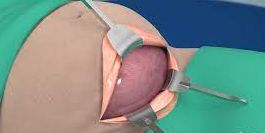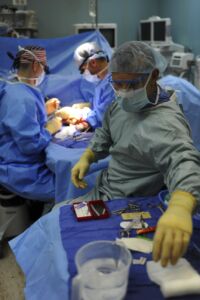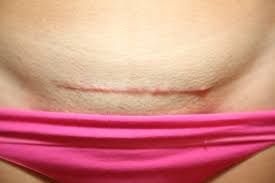Caesarian Birth: Indications, Risks, and Recovery Process
A C-section, or Caesarian section, is a type of childbirth procedure in which an incision is made through the mother’s abdomen and uterus in order to deliver the baby. It is typically considered to be a last-resort option, as it carries a higher risk of complications than natural vaginal birth. However, in some cases it may be necessary due to potential risks to either the mother or baby. C-section can be performed before labor begins (scheduled caesarian) or during labor (emergency caesarian). During the procedure, an anesthesiologist will administer anesthesia to numb the area before making the incisions and delivering the baby. After delivery, the incisions are closed with stitches or staples. Postpartum care for caesarian birth typically involves more rest and self-care for several weeks as recovery from surgery takes longer than for vaginal birth. Please keep reading for details on the following topics:
Types of caesarian births
Indications for a caesarian birth
Risks of caesarian delivery
Anesthesia
What happens before a caesarian section
What happens during a caesarian birth
Tests performed before the operation
Persons present in the operating theatre
The recovery process
Future deliveries after a caesarian section
Care after a c section
Signs of poor wound healing

TYPES OF CAESARIAN BIRTHS
-
-
Elective Caesarian Birth: This type involves scheduling the caesarian section for a specific date before the onset of labor. It’s usually planned in advance, often for medical reasons or based on the preferences of the mother or healthcare provider.
-
Emergency Caesarian Birth: An emergency caesarian section is performed when there is an immediate threat to the health or life of the mother or baby, and there is not enough time for a planned procedure. This could be due to complications during labor or delivery, such as fetal distress, umbilical cord prolapse, or placental abruption.
-
REASONS FOR A CAESARIAN BIRTH
There are several reasons why a cesarean birth (C-section) might be necessary. Some common indications include:
- Labor is not progressing: If labor stalls or does not progress as expected, a C-section may be performed to ensure the safe delivery of the baby.
- Fetal distress: Signs that the baby is not tolerating labor, such as abnormal heart rate patterns, may prompt the need for a C-section.
- Malpresentation: If the baby is not positioned head-down in the womb (vertex presentation) or if there are other abnormal fetal positions, a C-section may be necessary.
- Fetal macrosomia: If the baby is estimated to be too large to pass through the mother’s pelvis, a C-section may be recommended to avoid complications during vaginal birth.
- Placenta previa: When the placenta partially or completely covers the cervix, a vaginal birth may not be safe, necessitating a C-section.
- Placental abruption: If the placenta detaches from the uterine wall before delivery, it can lead to life-threatening bleeding, requiring an emergency C-section.
- Maternal health conditions: Certain maternal health issues, such as high blood pressure (preeclampsia), diabetes, infections, blood clots in the lungs (pulmonary embolism), hip fracture, sickle cell anemia, or seizure activity which may increase the risk of complications during vaginal birth, warranting a C-section.
- Pelvic abnormalities: Structural abnormalities of the pelvis may hinder the passage of the baby during vaginal birth, necessitating a C-section.
- Vaginal lesions: If the woman has lesions or sores in the vagina that could potentially be transmitted to the baby during a vaginal birth, a C-section may be advised to reduce the risk of infection to the newborn.
- Multiple previous caesarian deliveries: Women who have undergone two or more previous caesarian deliveries may have an increased risk of complications during subsequent vaginal births, making a repeat C-section the safer option.
- Recent previous C-section: If a woman had a caesarian delivery less than 1 and 1/2 years ago, opting for another C-section for the current pregnancy may be recommended to reduce the risk of uterine rupture during labor.
- Severe vaginal tears: Women who experienced third or fourth-degree vaginal tears (perineal tears involving the anal sphincter) during a previous delivery may opt for a planned C-section to avoid the risk of recurrent severe tearing.
- Placental or umbilical cord problems: Complications such as placenta previa, placental abruption, or abnormal umbilical cord insertion can endanger the baby’s health during vaginal birth, necessitating a C-section for safer delivery.
- Multiple pregnancy: Carrying twins, triplets, or more fetuses increase the risk of complications during labor and delivery, such as fetal malpresentation or cord entanglement, making a C-section a safer option for delivery.
RISKS FROM A CAESARIAN DELIVERY
Caesarian delivery, like any surgical procedure, carries certain risks. Some potential risks associated with a caesarian birth include:
- Infection: There’s a risk of infection at the surgical site (wound infection) or within the uterus (endometritis), which may require antibiotics for treatment.
- Excessive bleeding (hemorrhage): During or after the surgery, there’s a risk of significant blood loss, which may necessitate blood transfusion or other interventions to control bleeding.
- Blood clots: Caesarian delivery increases the risk of blood clots forming in the legs (deep vein thrombosis) or lungs (pulmonary embolism), which can be life-threatening if not treated promptly.
- Organ damage: There’s a small risk of unintentional injury to nearby organs such as the bladder or intestines during the surgical procedure.
- Adverse reactions to anesthesia: Some women may experience side effects or complications related to the anesthesia used during the caesarian delivery, such as allergic reactions, respiratory problems, or nerve damage.
- Longer recovery time: Recovery from a caesarian birth typically takes longer compared to vaginal birth, and there may be discomfort, pain, or mobility limitations during the healing process.
- Respiratory problems for the newborn: Babies born via caesarian section may be at a slightly higher risk of experiencing transient tachypnea (rapid breathing) or respiratory distress syndrome (breathing difficulties) compared to babies born vaginally.
- Delayed bonding and breastfeeding: Recovery from caesarian delivery may hinder immediate skin-to-skin contact between the mother and baby and delay breastfeeding initiation.
- Future fertility implications: Multiple caesarian deliveries may increase the risk of complications in future pregnancies, such as placenta previa or placenta accreta, which can affect fertility and pregnancy outcomes.
- Injury to the fetus: During the surgical procedure, there is a slight risk of accidental injury to the fetus. Although rare, this could include lacerations or bruises. However, it’s essential to note that cesarean sections are performed with utmost care to minimize such risks.
- Severe pain at the incision site: After the caesarian delivery, some women may experience significant pain and discomfort at the incision site. Proper pain management strategies, such as medications and positioning, are utilized to alleviate this discomfort during the recovery period.
- Rupture of the incision scar in future pregnancies: Women who have undergone a caesarian delivery are at increased risk of experiencing a uterine scar rupture during subsequent pregnancies, especially if they attempt vaginal birth after caesarian (VBAC). This can lead to severe complications for both the mother and baby, including excessive bleeding and fetal distress, necessitating emergency medical intervention.
ANAESTHESIA
Anesthesia is a medical technique used to induce a temporary loss of sensation or consciousness, allowing medical procedures to be performed with reduced discomfort or pain. In the context of caesarian delivery, anesthesia plays a crucial role in ensuring the comfort and safety of the mother during surgery. There are different types of anesthesia that may be used during a caesarian section:
- General anesthesia: General anesthesia induces a state of unconsciousness, rendering the patient completely asleep and unaware during the surgery. It is typically administered through inhalation or intravenous (IV) medications. General anesthesia may be used in emergency situations or when regional anesthesia is contraindicated or not preferred by the patient.
- Regional anesthesia: This type of anesthesia is typically preferred for caesarian deliveries. It includes spinal anesthesia and epidural anesthesia.
a. Spinal anesthesia: Spinal anesthesia involves injecting a local anesthetic medication into the spinal fluid in the lower back, which numbs the lower half of the body. This results in profound pain relief and muscle relaxation, allowing for caesarian delivery while the patient remains awake and conscious. Spinal anesthesia acts quickly and is commonly used for scheduled caesarian sections.
b. Epidural anesthesia: Epidural anesthesia involves placing a catheter into the epidural space of the spine, through which local anesthetic medications can be continuously infused to provide pain relief during labor and cesarean delivery. It numbs the lower half of the body similarly to spinal anesthesia but can be titrated to provide prolonged pain relief for postoperative recovery.
The choice of anesthesia for caesarian delivery depends on various factors, including the urgency of the surgery, the preferences of the patient and healthcare provider, and the medical condition of the mother and baby. Anesthesiologists play a crucial role in assessing the patient’s health status, administering anesthesia, monitoring vital signs, and managing any complications that may arise during the procedure.
WHAT HAPPENS BEFORE A CAESARIAN BIRTH
TESTS PERFORMED BEFORE THE SURGERY
These are specific tests commonly conducted before a caesarian delivery:
- Measurement of temperature, blood pressure, and pulse: Vital signs are assessed to ensure the woman is in stable condition before undergoing surgery.
- Blood tests: A complete blood count (CBC) and kidney and liver function tests are performed to evaluate the woman’s overall health and assess her ability to tolerate surgery and anesthesia.
- Blood typing and cross matching: In preparation for possible blood transfusion during or after surgery, blood typing and cross matching are conducted to ensure compatibility and safety.
- COVID-19 test: Given the potential risks associated with COVID-19 infection, a COVID-19 test may be performed to detect any active infection before the surgery.
- Non-stress test: This test monitors the fetal heart rate and assesses fetal well-being by measuring the baby’s heart rate response to movement.
- Obstetric ultrasound: An ultrasound examination is conducted to evaluate fetal presentation (positioning) and maturity (gestational age). This helps determine the optimal timing and approach for the caesarian delivery.
PERSONS PRESENT IN THE OPERATING THEATRE
During a caesarian delivery, several healthcare professionals are typically present in the operating theatre to ensure the safety and well-being of both the mother and the baby. These individuals may include:
- The Obstetrician is the primary surgeon who performs the caesarian section. The obstetrician is responsible for making the surgical incision, delivering the baby, and ensuring the safety of both the mother and the baby during the procedure.
- Anesthesiologist administers anesthesia and monitors the mother’s vital signs throughout the surgery. The anesthesiologist ensures that the mother remains comfortable and stable during the caesarian delivery.
- A registered nurse is present to assist the surgical team and provide perioperative care to the mother. The nurse may assist with preparing the operating room, positioning the mother for surgery, and ensuring that all necessary equipment and supplies are available.
- The circulating nurse is responsible for managing the operating room environment, including obtaining necessary equipment and supplies, documenting surgical events, and ensuring that proper protocols are followed.
- The surgical assistant, often another obstetrician or a trained surgical nurse, assists the primary surgeon during the caesarian section. This may involve providing additional support during the surgical procedure, such as retracting tissues or assisting with suturing.
- A neonatologist or pediatrician may be present to assess and provide immediate care to the newborn baby after delivery. They ensure that the baby is stable, breathing well, and adapting to the outside environment.
-
An operating room technician helps prepare the operating room, sterilize instruments, and assist the surgical team as needed during the procedure.

WHAT HAPPENS DURING THE C-SECTION
During a caesarian section (C-section), several steps are involved in safely delivering the baby. The operation usually lasts 30-50 minutes and takes place in the operating room. Here’s what typically happens during a C-section:
- Preoperative Preparation: The surgical team reviews the preoperative checklist to ensure accuracy and patient safety. The woman is connected to blood pressure monitors for continuous vital sign monitoring. Before the surgery begins, the mother is prepped in the operating room. This includes administering anesthesia, usually either spinal or epidural anesthesia for regional numbness or general anesthesia for unconsciousness. The anesthesia ensures the mother doesn’t feel pain during the procedure. A sterile screen is placed over the woman’s body to prevent the spread of germs and minimize visual exposure to the surgical area.
- Incision: Once the anesthesia takes effect, the surgical site is cleaned with a sterile solution and draped to create a sterile field. The surgeon will then make an incision in the abdomen and uterus. The type of incision may vary, but a low transverse incision (horizontal) on the lower abdomen is common. This incision allows access to the baby without interfering with future pregnancies. The surgeon will gradually extend the incision through fat, muscle, and the uterus.
- Delivery of the Baby: After the incisions are made, the surgeon gently delivers the baby through the opening in the uterus. Assistance may be provided to guide the baby out, especially if labor hasn’t progressed far enough to aid in delivery.
- Umbilical Cord and Placenta: Once the baby is delivered, the umbilical cord is clamped and cut. The placenta is then removed from the uterus.
- Baby Care: The newborn is evaluated by a pediatrician or neonatologist to ensure they are breathing well and adapting to life outside the womb. If needed, immediate medical attention is provided.
- Closing Incisions: After the baby and placenta are delivered, the surgeon carefully closes the incisions in the uterus and abdomen layer by layer. This usually involves stitching the uterine incision and then the abdominal incision with dissolvable sutures or staples. A dressing will then be applied to the wound on the abdomen.
-
Postoperative Care: The mother is closely monitored as she recovers from anesthesia. Vital signs are checked regularly, and pain management is provided as needed. The mother may be moved to a recovery room once stable. In the recovery room, the woman will be monitored until she has fully recovered from anesthesia. Once fully recovered, the woman will be transferred to the ward, where she can hold and nurse her baby.
THE RECOVERY PROCESS
The recovery process following a caesarian section (C-section) involves several steps to promote healing and ensure the well-being of the mother. Here’s what typically happens during the recovery process:
- Hospitalization: After the C-section, the mother is usually hospitalized for approximately 3 days. This duration may vary depending on individual circumstances and any complications that may arise.
- Incision Care: The mother is instructed on how to care for the incision site, including keeping it clean and dry, changing dressings as needed, and watching for signs of infection.
- Pain Management: Pain medication is provided to help manage discomfort associated with the surgical incision. This may include oral medications or intravenous pain relief.
- Mobility: Encouragement to move and walk around gradually begins, typically within the first 24 hours after surgery. This helps prevent complications such as blood clots and promotes circulation.
- Breastfeeding Support: If the mother plans to breastfeed, she receives support and guidance from healthcare providers to initiate breastfeeding and ensure proper latch and positioning.
- Emotional Support: Emotional support is provided to the mother to address any feelings of anxiety, stress, or concerns about recovery and caring for her newborn.
- Follow-up Care: After discharge from the hospital, the mother typically has a follow-up appointment with her healthcare provider to assess incision healing, address any concerns, and provide further guidance on postpartum recovery and care.
- Restrictions and Activity: The mother is advised to avoid strenuous activities, heavy lifting, and driving until she has fully recovered, typically around the 6-week postpartum check-up.
- Self-care: The mother is encouraged to prioritize self-care, including getting plenty of rest, staying hydrated, eating a balanced diet, and practicing relaxation techniques.
- Wound Healing: Over time, the surgical incision heals, and any discomfort or pain gradually subsides. The incision scar may fade and become less noticeable with time.
- Emotional Adjustment: Adjusting to the physical and emotional changes following a C-section takes time. Mothers may benefit from support groups, counseling, or talking to other women who have had similar experiences.
- Bowel movements and constipation:
-
- Straining to pass stool can exert pressure on the surgical incision, potentially causing discomfort or disrupting the healing process. Therefore, women are advised to avoid straining during bowel movements to prevent complications.
- It is not uncommon for some women to experience delayed bowel movements after a caesarian section, particularly within the first few days following surgery. This delay may be due to factors such as anesthesia, pain medication, and decreased mobility.
- In cases where a woman is unable to pass stool, healthcare providers may recommend interventions to help alleviate constipation. This may include prescribing stool softeners, laxatives, or other medications to promote bowel movements and relieve discomfort.
-
A diet high in fiber is beneficial for preventing constipation and promoting regular bowel movements. Fiber-rich foods such as fruits, vegetables, whole grains, and legumes can help soften stools and facilitate bowel movements. It’s essential for women recovering from a caesarian section to maintain a balanced and nutritious diet to support overall healing and well-being.
FUTURE DELIVERIES AFTER A CAESARIAN
After having a caesarian section (C-section), women may have questions about future pregnancies and deliveries. Here are important considerations regarding future deliveries after a C-section:
- Vaginal Birth After Caesarian (VBAC) is Possible: Some women may still be candidates for a vaginal delivery after a previous C-section. The decision to attempt VBAC depends on various factors, including the reason for the previous C-section, the type of uterine incision, and the woman’s overall health.
- Whether a woman has another C-section or attempts VBAC may depend on her health condition, the condition of the baby, and other individual factors. Healthcare providers will assess the risks and benefits of each option and work with the woman to make an informed decision.
- In general, women who have had a previous C-section should avoid induction or augmentation of labor in subsequent pregnancies. This is because these interventions can increase the risk of uterine rupture, especially if the woman has had a previous uterine incision.
- While some women may safely have multiple C-sections, there is a limit to the number of C-sections a woman can safely undergo. The maximum number of C-sections typically recommended is three, as each additional C-section increases the risk of complications such as uterine rupture, placenta accreta, and other serious issues.
- Women who have had multiple C-sections or who are at high risk for complications may consider permanent forms of birth control such as tubal ligation (blocking or severing the fallopian tubes) or hysterectomy (removal of the uterus) to prevent future pregnancies. These procedures are considered permanent and irreversible methods of contraception.
- Healthcare providers will assess the risks and benefits of VBAC versus repeat C-section for each individual woman. VBAC carries a small risk of uterine rupture, especially if the previous C-section involved a classical or T-shaped uterine incision. However, VBAC also offers benefits such as shorter recovery time and decreased risk of surgical complications.

Tubal ligation is a surgical procedure in which the fallopian tubes are blocked or severed to prevent pregnancy. The fallopian tubes are connected between the ovaries and uterus, so when they are blocked or cut, eggs cannot travel from the ovaries to the uterus.
Hysterectomy is a surgical procedure in which all or part of the uterus is removed. This can be done for a variety of medical reasons, including cancer, fibroids, endometriosis, adenomyosis, pelvic pain, heavy menstrual bleeding, and uterine prolapse. Both procedures are considered permanent forms of birth control and typically require general anesthesia.
CARE AFTER A C-SECTION
After undergoing a caesarian section (C-section), women require specific care to ensure optimal recovery and well-being. Here’s a guide to care after a C-section:
- Rest: Adequate rest is crucial for promoting healing and recovery after surgery. Women should aim to get plenty of rest in the days following the C-section and avoid strenuous activities.
- Pain Management: Pain and discomfort are common after a C-section. Women are typically prescribed pain medication to manage postoperative pain. It’s important to take medications as prescribed, be cautious about overdoing it, follow recommended dosage instructions and report any persistent or severe pain to healthcare providers.
- Incision Care: Proper care of the surgical incision is essential for preventing infection and promoting healing. Women should keep the incision clean and dry, avoid scrubbing or rubbing the incision area, and follow healthcare providers’ instructions for changing dressings.
- Support the Incision: Supporting the incision site when coughing, laughing, sneezing, or moving can help reduce discomfort and minimize strain on the incision. Using a pillow or holding a cushion over the incision area can provide support and alleviate discomfort.
- Avoid Heavy Lifting: Women should avoid lifting heavy objects or engaging in strenuous activities that could strain the abdominal muscles and incision site. Healthcare providers typically recommend avoiding lifting anything heavier than the newborn baby for the first few weeks after a C-section.
- Wear Pads: It’s common for women to experience vaginal bleeding, known as lochia, after a C-section. Using pads instead of tampons is recommended to avoid introducing bacteria into the vagina and reduce the risk of infection.
- Monitor for Signs of Complications: Women should monitor the incision site for signs of infection, such as increased redness, swelling, warmth, or discharge. Additionally, they should watch for symptoms such as fever, severe pain, or heavy bleeding and report any concerns to healthcare providers promptly.
- Attend Follow-up Appointments: Follow-up appointments with healthcare providers are essential for monitoring recovery progress, assessing incision healing, and addressing any concerns or complications. Women should attend all scheduled follow-up appointments and communicate openly with healthcare providers about their recovery.
- Emotional Support: Recovering from a C-section can be physically and emotionally challenging. It’s important for women to seek emotional support from partners, family members, friends, or support groups to help cope with the challenges of recovery and adjust to the changes of motherhood. Take care of your emotional well-being by seeking support from loved ones, talking openly about your feelings, and practicing self-care activities that help you relax and unwind.
- Stay Hydrated and Eat Nutritious Foods: Drink plenty of fluids to stay hydrated and support your body’s healing process. Eat a balanced diet rich in fruits, vegetables, lean proteins, and whole grains to provide essential nutrients for recovery.
- Gentle Movement and Exercise: Gradually reintroduce gentle movement and light exercise as recommended by your healthcare provider. Walking and gentle stretching can help improve circulation, promote healing, and prevent complications such as blood clots.
- Be Patient and Kind to Yourself: Remember that recovery takes time, and it’s normal to experience a range of emotions during the postpartum period. Be patient with yourself, listen to your body, and don’t hesitate to ask for help when needed.
SIGNS OF POOR WOUND HEALING
It is important to know when to seek urgent medical care, as delaying appropriate treatment can lead to further health complications. If you experience any of the following symptoms, you should seek medical help immediately. If you have any doubts about whether you should seek medical care, it is always better to err on the side of caution and consult with your doctor. Here are some signs to watch for:
- Incision Not Healing: If the incision site fails to show signs of healing, such as closing or forming a scab, or if it appears to be getting larger or deeper, it may indicate poor wound healing.
- Persistent Bleeding: Excessive or prolonged bleeding from the incision site, or the presence of fresh blood on dressings, may suggest poor wound healing or other complications.
- Separation of Wound Edges: If the edges of the incision separate or pull apart, creating a gap or opening in the wound, it could be a sign of poor wound healing or wound dehiscence.
- Drainage or Pus: The presence of pus, cloudy or foul-smelling drainage, or excessive fluid leaking from the incision site may indicate infection, which can impede wound healing.
- Increased Redness, Swelling, or Warmth: If the skin around the incision becomes increasingly red, swollen, or warm to the touch, it may indicate inflammation or infection, both of which can interfere with wound healing.
- Fever or Chills: A fever above 100.4°F (38°C) or chills may indicate the presence of an infection, which can impair wound healing and require prompt medical attention.
- Intense Pain: Persistent or worsening pain at the incision site, especially if it is sharp, stabbing, or throbbing, may signal complications such as infection or inflammation affecting wound healing.
- Delayed Healing: If the incision does not show signs of improvement or begins to worsen after the initial postoperative period, it may indicate poor wound healing and the need for further evaluation.
- Systemic Symptoms: Symptoms such as fatigue, malaise, nausea, or vomiting, particularly when accompanied by other signs of poor wound healing, may suggest systemic complications requiring medical attention.
 NORMAL WOUND
NORMAL WOUND
 INFECTED WOUND
INFECTED WOUND
Disclaimer: The information provided in this content is for general informational purposes only. It is not intended as medical or healthcare advice, diagnosis, or treatment. Always seek the advice of a qualified healthcare professional with any questions you may have regarding a medical condition or healthcare decisions.

